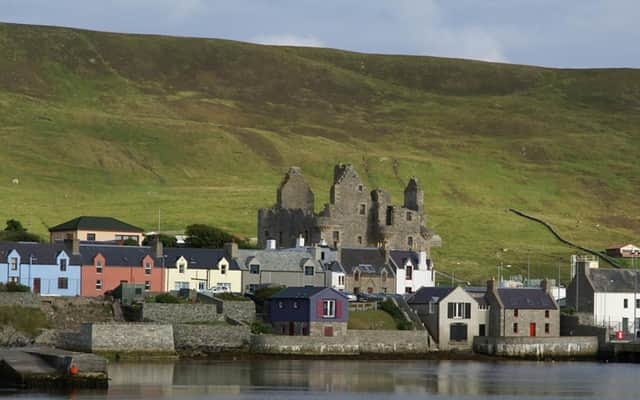A 'van load' of artefacts taken from Pictish-era site on Shetland


The haul included painted pebbles, pieces of elaborately-decorated comb and pottery, some which were found in the front garden of a house on the outskirts of Scalloway on the mainland.
Archaeologists believe it may have been the site of a domestic Pictish settlement, one of only two or three known on the islands.
Advertisement
Hide AdAdvertisement
Hide AdThe remains of at least two small beehive-shaped buildings, which may have been dwellings and linked together with others, were also discovered.
Archaeologists worked on the site, which sits next to land excavated in the 1980s to make way for a housing development, after a resident started digging in his garden to build a shed for his children’s bikes.
Val Turner, regional archaeologist at Shetland Amenity Trust, said: “It was really an important excavation and it was really good to be able to have a second look at the site – and to look at it when there is more modern techniques available for the analysis.
"Pictish sites like this are so uncommon so it has been very exciting to get that information and then be able to compare it to only one or two other similar sites on Shetland.”
The Scalloway site has been used – and re-used – throughout time.
The earlier excavation found remains of an Iron Age Village which centred round a broch, or a large stone tower, which was probably built between 400-200BC.
The Picts, who lived in the north and east of present-day Scotland from around the 3rd to 9th Century, then settled around the remains of the village.
Now, during the the most recent dig, 26 skeletons from the the 14th or 15th Century were found around 12 inches above the Pictish era- layer and have now been removed.
Advertisement
Hide AdAdvertisement
Hide AdIt is understood that the skeletons were aligned in north/south formation which is considered unusual given the usual east/west formation of Christian graves.
The analysis of the finds, which are said to have filled an entire van, is not likely to be completed until next year.
Ms Turner said the Pictish painted pebbles were of particular interest.
The pieces of quartz were decorated with ‘lamp black’ – or soot from lamps that were perhaps lit by fish oil – and painted with dots and ‘wavy’ patterns.
Ms Turner said that no one had yet been able to establish how the lamp black designs were fixed to the stones.
She added: “These are things that are only found in the north of Scotland and the majority of them have been found in Shetland.
"There is obviously a reason why someone went to the trouble to decorate them in such a way that the pattern doesn’t come off.”
The entire haul was very well preserved when it was removed from the ground, probably due to the sand in the soil.
The finds at Scalloway build on Shetland’s Pictish hertage.
Advertisement
Hide AdAdvertisement
Hide AdA larch wooden box containing 28 elaborate Pictish silver objects – and the jawbone of a porpoise – was found at St Ninian’s Isle in the 1950s.
The pieces are believed to have been made in several places including Ireland and the South of England, with the haul suggesting that some Shetland Picts were extremely wealthy.